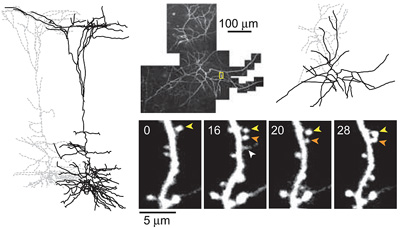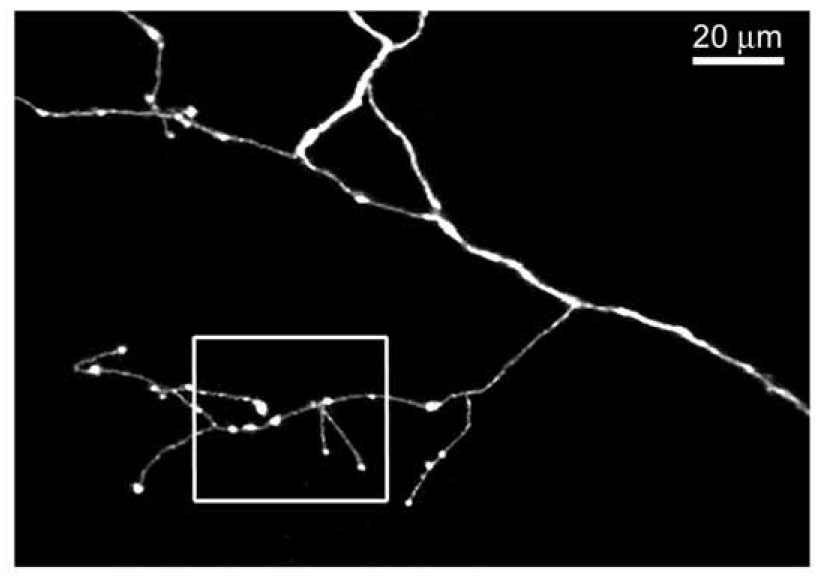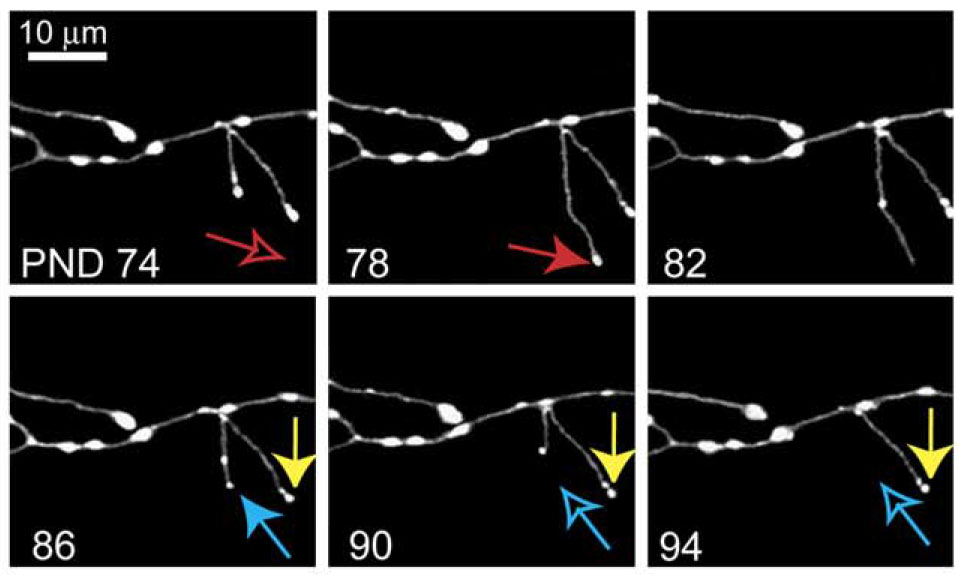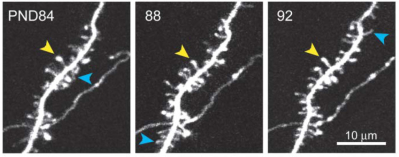
Pubmed: Wilbrecht L
Experience-dependent and cell-type specific spine growth in the neocortex
Functional circuits in the adult neocortex adjust to novel sensory experience, but the underlying synaptic mechanisms remain unknown. Growth and retraction of dendritic spines with synapse formation and elimination could change brain circuits. In the apical tufts of layer 5B (L5B) pyramidal neurons in the mouse barrel cortex, a subset of dendritic spines appear and disappear over days, whereas most spines are persistent for months. Under baseline conditions, new spines are mostly transient and rarely survive for more than a week. Transient spines tend to be small, whereas persistent spines are usually large. Because most excitatory synapses in the cortex occur […]
Cell type-specific structural plasticity of axonal branches and boutons in the adult neocortex
We imaged axons in layer (L) 1 of the mouse barrel cortex in vivo. Axons from thalamus and L2/3/5, or L6 pyramidal cells were identified based on their distinct morphologies. Their branching patterns and sizes were stable over times of months. However, axonal branches and boutons displayed cell type-specific rearrangements. Structural plasticity in thalamocortical afferents was mostly due to elongation and retraction of branches (range, 1-150 microm over 4 days; approximately 5% of total axonal length), while the majority of boutons persisted for up to 9 months (persistence over 1 month approximately 85%). In contrast, L6 axon terminaux boutons were highly […]
Transient and Persistent Dendritic Spines in the Neocortex In Vivo
Dendritic spines were imaged over days to months in the apical tufts of neocortical pyramidal neurons (layers 5 and 2/3) in vivo. A fraction of thin spines appeared and disappeared over a few days, while most thick spines persisted for months. In the somatosensory cortex, from postnatal day (PND) 16 to PND 25 spine retractions exceeded additions, resulting in a net loss of spines. The fraction of persistent spines (lifetime ≥ 8 days) grew gradually during development and into adulthood (PND 16–25, 35%; PND 35–80, 54%; PND 80–120, 66%; PND 175–225, 73%), providing evidence that synaptic circuits continue to stabilize even […]



